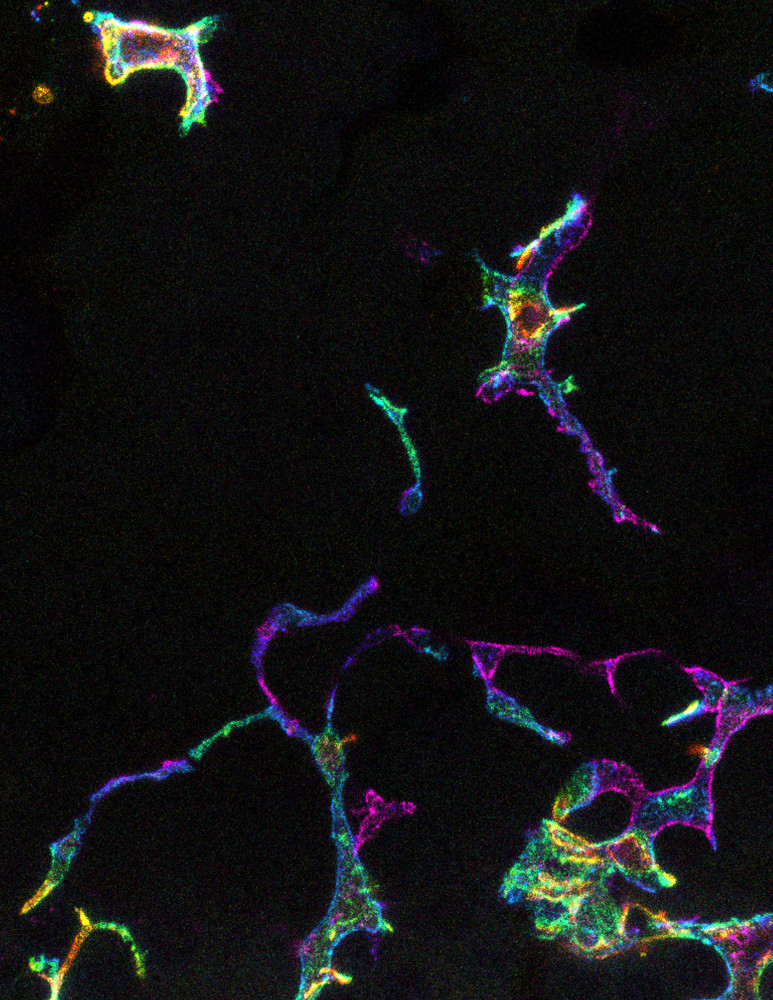25 Jul 2023
Researchers discover specialised immune cells patrolling the human eye
University of Melbourne researchers have discovered that the sentinels guarding the healthy human cornea from pathogens and inflammation are T cells, and not another type of immune cells called dendritic cells, as previously thought.
The discovery, published in the Proceedings of the National Academy of Sciences journal, redefines current understanding of the immune cell landscape in the cornea of a healthy human eye.
It builds on previous research published by the team last year in Cell Reports that showed that T cells protect the eye against virus infection in mice.
The collaborative research team led by University of Melbourne’s Associate Professor Laura Downie and Dr Holly Chinnery from the Department of Optometry and Vision Sciences and Professor Scott Mueller, from the Department of Microbiology and Immunology at the Doherty Institute jointly developed a new imaging technique as part of their investigation.
Professor Mueller explained that our knowledge of the various immune cell types in the human cornea is important for establishing the eye’s protective mechanisms against pathogens and disease.
“By combining our newly developed imaging technique with other advanced analytical approaches, we were able to discover that a significant number of cells at the surface of the healthy cornea are actually T cells,” said Professor Mueller.
“Until now, these cells were mistakenly classified as dendritic cells based on static imaging. This completely changes the current dogma in the field that only dendritic cells are present in the healthy cornea.”

Image of immune cells in the human cornea. Credit: Dr Holly Chinnery
Associate Professor Downie said that being able to dynamically capture the cells’ normal behaviour, and in response to inflammation, provides unique understanding into the immune response in the eye.
“Using our non-invasive imaging approach, which we term Functional In Vivo Confocal Microscopy (Fun-IVCM), we have been able to see that these T cells move around quickly and interact with other cells and nerves in the outermost layer of the cornea. We also captured different cell dynamics in response to contact lens wear and in allergic eye disease, and quantified how these behaviours are modulated by drug treatments,” said Associate Professor Downie.
“These findings reshape our understanding of the distinct immune cell subsets in the human cornea, and how they respond to different stimuli. Using Fun-IVCM, we can achieve rapid, real-time insight into the cellular immune responses in living humans, in this accessible peripheral sensory tissue.”
Dr Chinnery said that the new research will have major implications for the medical and immunology fields, including for patients and practitioners.
“Because this new technique involves non-invasive, time-lapse imaging of the human cornea, Fun-IVCM could be used in clinics directly to assess immune responses and ocular health. It could even be used for general immune system health,” said Dr Chinnery.
“Changes in T cells and behaviour could be used as a clinical biomarker of disease and assist with treatments.”
Peer review: Proceedings of the National Academy of Sciences https://doi.org/10.1073/pnas.2217795120
Funding: This research was funded by Australia’s National Health and Medical Research Council (NHMRC).


